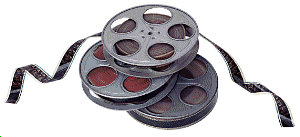

Hum 3: Film Principles
Fr. Rene C. Ocampo, SJ/Bong S. Eliab
Second Semester, 2001-2002
Humanities Division
School of Arts and Sciences
Ateneo de Davao University
Syllabus | Notes | Examinations | Papers | Bulletin Boards | Grades
Montage (at least in its European sense) is characterized by a particular film editing method: shots, rather than just 'edited' together, are constructed. James Monaco has defined montage as having the following usages:
A dialectical process that creates a third meaning out of the original two meanings of the adjacent shots (editing thus has only two fundamental methods: cut and overlap). A process in which a number of short shots are woven together in order to communicate a great deal of information in a short period of time. The last is simply a special case of general montage; the dialectical process is inherent in any montage, conscious or not. Still pictures can be put together solely with regard to the rhythm of the succeeding shots. Any kind of montage is defined according to the action it photographs. James Monaco. How to Read a Film. Oxford: Oxford University Press, 1981. pp.183-4. Montage, in this sense, operates on a more practical level in editing. It can be used, for example, to manipulate time. The jump cut, thus, is an element that can be used in montage. Shots can be repeated, manipulated, or have time expanded or contracted in them. Cross-cutting gives ability to have stories running concurrently, interweaving between each one - in real time or otherwise. You may want to think about formal meaning too. Overall, what is produced from montage is a construction of a specific notion that the director has in mind. A particular sequence uses montage for an identifiable purpose - as with the examples just given. This notion is usually thematic, but it can produce far deeper connotations, such as the following. Eisenstein and Soviet Montage..The montage of attractions advocated by the young Eisenstein, a conception of editing that, it might be added, the Russian master subsequently repudiated once he realised that film form essentially depends on a dialectical opposition between a continuity and a discontinuity. Noel Burch. Theory of Film Practice. Paris: Editions Gallimard, 1969. p.71. The director most often associated with montage is Sergei Eisenstein, Russian director of the early 20th century. As this is very much the case, this page shall be linked to Eistenstein's methods and motifs. In Eisenstein's Battleship Potemkin, a small scene
where a sailor smashes a plate, occurs over ten cuts. On one hand, we have the mise-en-scene. On the other, we
have the editing. The editing makes the action more powerful, and it agitates.
There is no smooth continuity between the cuts, and there is hardly any match-on action. There is
also a zoom effect which, rather than being smooth, jumps. Intellectual Montage, occuring also in Potemkin, consists of cuts between visual icons. By linking two shots together with editing, an idea is created: a+b=c. For example, a shot of a cross (representing the church) cuts to one of a sword (the state). This is diegetic - the objects occur within the world of the film - and metaphorical - meaning something beyond their literal representation. Eisenstein wanted a shot to be the opposite of the previous one - for a collision to occur. Overlapping Montage is where shots 'overlap' each other. It opens the action up, so that you can see it from various points. It also, by definition, has to further the action - these functions are at odds with each other. The idea of continuity editing is to push the narrative along. Montage tends more to create atmosphere, mood, and ultimately, emotive impact. It also pushes the narrative along, but allows for a greater exploration of both form and content. David Parkinson summates the technical categories of Eisensteinian montage: ... (they) could be employed independently or simultaneously within a sequence. Metric montage determined the tempo of the editing, and was dictated by the duration, rather than the content, of each shot. Rhythmic montage, on the other hand, did take the shot content into account and gave it a valuable emphatic or contraputal function, as in sequences of sustained tension. The texture or emotional feel of the shots was the basis of Tonal montage... ...while Overtonal montage was a synthesis of metric, rhythmic and tonal which, while not existing in a single frame or in an edited sequence, became evident, as Eisenstein wrote, the moment the 'dialectical process of the passing of the film through the projection apparatus' commenced. David Robinson. History of Film. London: Thames and Hudson, 1995. p.76. Critically evaluating montagePeter Gidal in Materialist Film argues that a use of montage must take into account the duration of the film, both of the film itself, and of the narrative: The notion of post-Eisensteinian editing, for example, parallel montage (two things going on in different places at the same time, building suspense) is fundamentally opposed to film-as-duration... Strike (Sergei Eisenstein, Russia, 1924) produced filmic montage-as-duration, the foreground setting up of artifice and form within structures not subsumed by narrative. This was why Eisenstein at the time was accused of formalism! Peter Gidal. Materialist Film. London:
Routledge, 1989. p.7. |
Syllabus | Notes | Examinations | Papers | Bulletin Boards | Grades
All Rights Reserved 2001
Ateneo de Davao University
15 November 2001